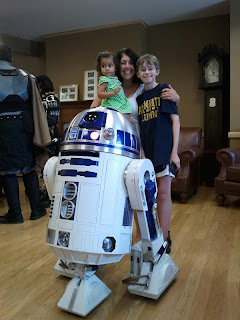Up here in Maine we are in the midst of the hot, muggy days. Once the temperature goes past 75F and the humidity rises to over 65%, I start to melt. As such, I took refuge inside, enjoying the air conditioning and getting some more work done on the slip ring.
First I had to pick up some more thin shrink wrap tubing and a DB25 clam shell, which will eventually cover the connector. My local retailer, ICC North in Brewer had everything I needed. (I love supporting local small businesses whenever I can)
The next step was to make sure the wires were twisted and ready for tinning. With such a thin wire, you do not need to very hot iron. You heat the wire from underneath and slowly apply the solder to the heated wire. It goes on very smoothly and just requires some practice to go on well. With 48 wire leads, you will eventually master it!
Now it is very important to have a multimeter handy for the next step. As you solder in the wires into the DB25, you can to test each end ....put a paperclip in the DB25 and touch a probe on that side, then on the other end of the slip ring, touch the matching bare wire lead. You want to make sure you have continuity and verify the connection will work.
The trickiest part is getting the leads into the DB25 connector. Someone suggested putting some solder in the "bucket", heat it and stick the wire in. Don't do that. That's sucks! Without burning yourself, I found the best process was this:
1) Make sure you trim the wire lead so you do not have too much exposed wire showing.
2) Put a small amount of solder on your solder iron.
3) As you place the wire lead into the connector, use that small dab or solder to position the wire into the bucket. Its really hard (for this newbie) to get the iron in the right position around those little connectors. I added more solder when I was satisfied I had a good connection and verified it with the multimeter
I have the shrink tubing already on the wiring, so when all the soldering is done, I can reinforce the solders with that.
Per the instructions, I skipped pin 7 since this is a 25 pin connector and we have a 24 wire slip ring.
As you can see, my soldering will not win me any awards...and hopefully will improve as I go!














































